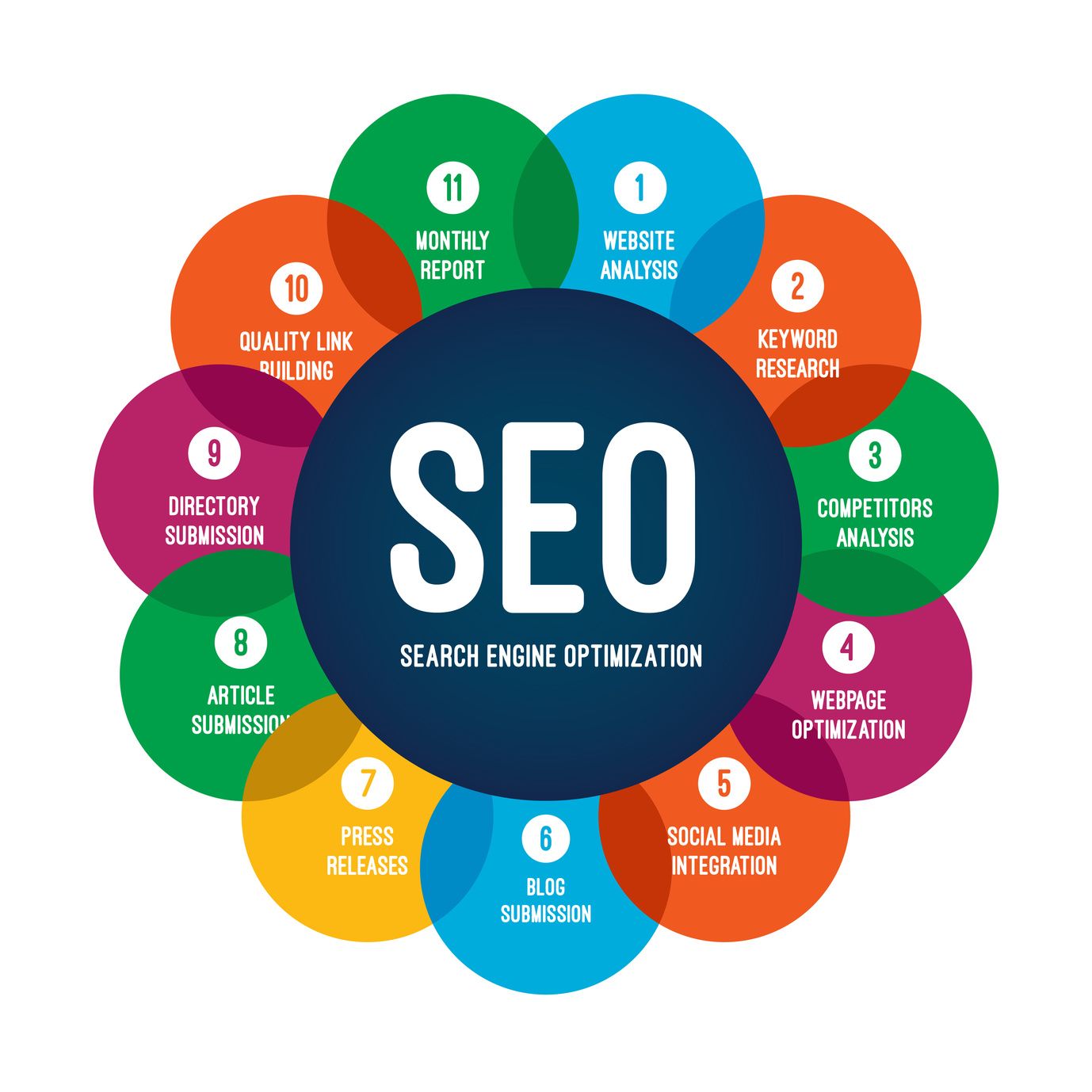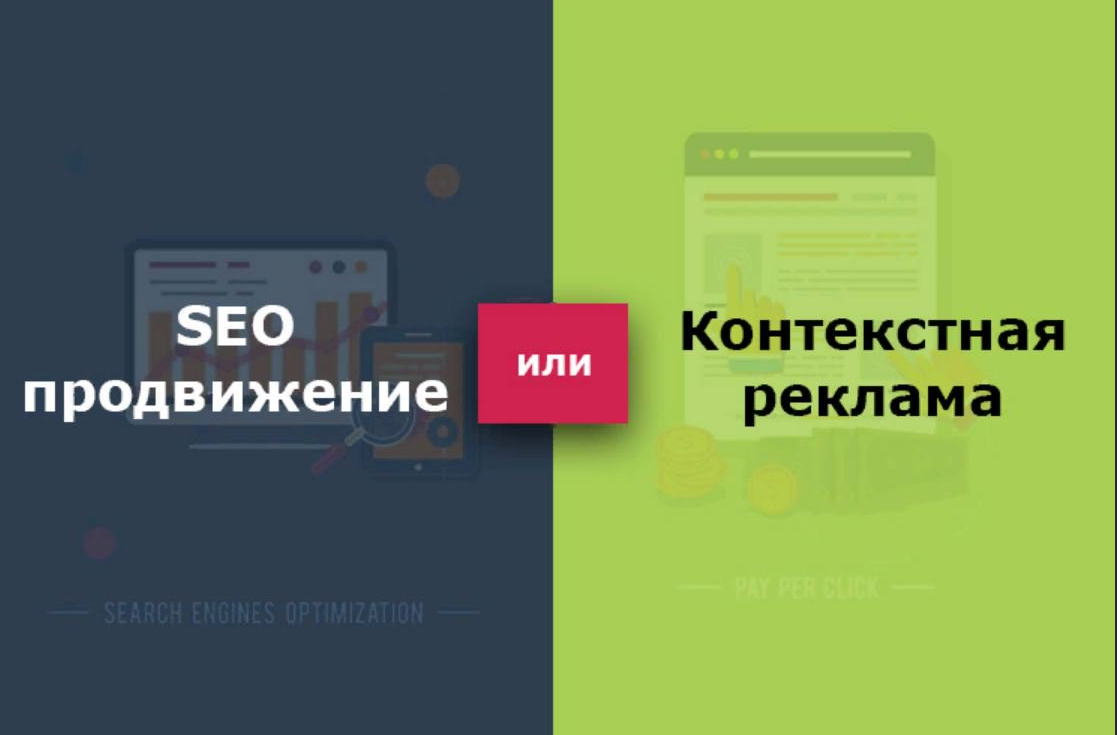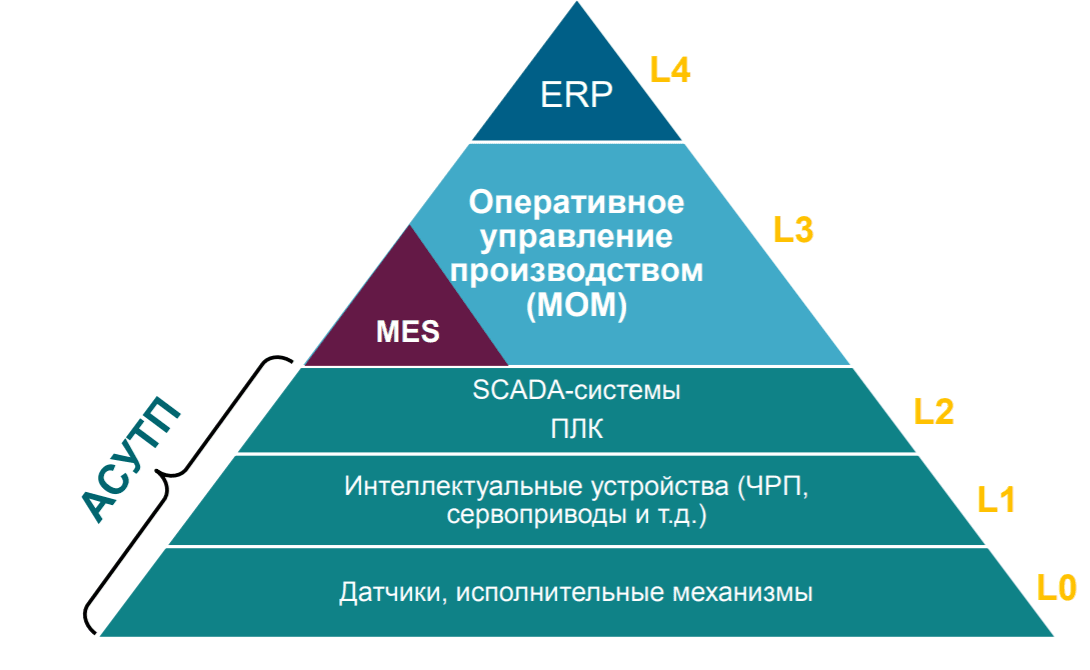Annotation
SEO for competitive keywords isn't a single feature, but a well-structured system where every detail impacts the final result: from technical settings and website architecture to content quality, link signals, UX, and analytics discipline. In this article, we cover the entire process in detail: preparing a website for growth, building semantic clusters, creating content briefs and an editorial plan, setting up internal and external links, accelerating Core Web Vitals, designing a behavioral funnel, and then managing rankings through controlled experiments and updates. Everything—with specifics, templates, examples, and checkpoints for business owners, marketers, and SEO specialists.
Why businesses need to lead in competitive searches
Business effect. Top positions for commercial and long-tail competitive queries generate a steady flow of warm leads. Organic searches are cheaper and more sustainable over the long term than contextual searches, and the CTR of the top 5 search results is many times higher than the rest of the search results. For companies in Tashkent and major cities of Uzbekistan, this is especially important in markets where CPC is rising and competitors are actively testing new advertising formats.
Marketing synergy. Search results strengthen other channels: branded queries grow, content naturally accumulates links, and reputational signals accelerate the indexing of new content. Ultimately, SEO becomes the core of content strategy and PR activities.
Risk management. Strong organic traffic reduces dependence on ad auction volatility and seasonal fluctuations in demand. The site's ecosystem gains a buffer: if one cluster declines, others maintain traffic.
Conclusion: moving to the top is not just about “positions,” but about the economics of attraction and sustainable growth.

Stage 1. Comprehensive audit: technical base, quality signals, competitive environment
Scanning and indexing
— Crawling: We run a scan (Screaming Frog/Website Auditor), record status codes, nesting depth, duplicates, canonical, pagination, hreflang (if multilingual).
— Indexing: We check the index against the sitemap, remove "junk" URLs from the index (parameters, archives, filters without value), and check robots.txt and sitemap.xml.
— Server logs: If access is available, analyze logs to understand how often robots visit important URLs, which sections they ignore, and where the crawl budget is spent.
Practical conclusion: Before we start dumping content and links, we make sure the search engine can quickly detect and reindex key pages.
Core Web Vitals and Performance
— LCP, CLS, INP: We optimize the critical rendering path, re-split heavy bundles, convert media to modern formats (WebP/AVIF), connect HTTP/2/3, and enable caches at the server/CDN level.
— Mobile UX: Adaptive grid, user-friendly interactivity, clickable areas, no layout jumps.
— Query savings: Critical CSS inline, lazy loading of third-party widgets/analytics, preload of key fonts.
Result: Speed isn't a bonus, but a factor in visibility and conversion. Any optimization that saves 0.3–0.5 seconds on LCP impacts user experience and rankings.
Architecture and internal linking
— Hierarchy: sections → clusters → articles/landings.
— Link templates: Hubs with overview materials, leaflets with transactional intent, FAQ nodes for clarifying questions.
— Cannibalization: We check whether multiple URLs are competing for the same keyword; if necessary, we merge them, create redirects, and change the opening angles.
Checkpoint: The depth of important pages is no more than 3 clicks from the main page, and each leaflet has at least 2–3 internal links from relevant materials.
Competitive Landscape and SERP Features
— TOP-10/TOP-20: We're creating content and intent templates. We're looking at which page types are prevalent (guide, selection, commercial landing page, article with calculator).
— Issue features: Snippets, FAQs, videos, carousels—we plan which elements can take up additional SERP space.
Conclusion: an audit is a map of the terrain. Without it, strategy will be intuitive and expensive.
Stage 2. Semantics and Clusters: How to Transform Demand into Website Structure
Semantic collection and clustering
— Sources: Wordstat/Hints/People Also Ask, Serpstat/Ahrefs, regional search suggestions, internal site queries, sales questions.
— Intent marking: Informational, commercial, navigational; each intent has its own page type and depth of disclosure.
— Clustering: "Families" of queries under a single URL. For competitive topics, it's better to create thematic clusters (hub + child articles) rather than overloading a single piece of content.
Exact match (1 time in the text body): to bring a search query to the TOP, semantics should be based on real user intent and cover the entire spectrum of subtasks - from a general question to clarifying scenarios.
Anti-cannibalization and relevance maps
— Each key group has exactly one main URL.
— At the label level (Title/H1/internal anchors), we distinguish angles: “what is it”/“how to do it”/“cost”/“cases”.
— For H2/H3, we write micro-headings that match the prompts and questions.
Content briefs and editorial calendar
— Brief: Page goal, target phrase, People Also Ask, H2/H3 structure, CTA, media inserts, required tables/checklists.
- Calendar: publication frequency (Mon/Thu), distribution by clusters, update windows for old materials.
Bottom line: semantics are a technical specification for content and navigation, not a list of words. The better the brief, the faster the page gets into the relevant pool.
Stage 3. Technical optimization: flawless “infrastructure”
Indexing and manageability
— Sitemap(s): Separate maps for articles, categories, and media; auto-update upon publication.
— robots.txt: We close "empty" listings, service URLs, and parameters from the index.
— Canonical/pagination: We specify canonicals, on pagination — rel=next/prev (if relevant), and do not allow duplicates.
Micro-markup and rich snippets
— Article/BlogPosting, BreadcrumbList, FAQ Page, HowTo, Organization.
— Basic data: logo, address, phone number, schedule, social links.
— FAQ blocks: We move them to the end of the articles and adapt them to real questions from the prompts.
Security and stability
— HTTPS/HTTP3, HSTS, correct 301 redirects, protection of administrative sections.
— SLA processes: Deployment regulations, pre-release checklist, cache rollback after major changes.
Conclusion: the technical basis is indexing speed, predictability, “trust signals,” and clean logs for analysis.

Stage 4: Content that beats the competition
Structure of articles by intent
— Introduction without water: What we promise to give, what is the benefit for the reader.
— Frame H2/H3: each subheading is one question/one thought.
— Lists + output: After the lists, there must be a short summary paragraph.
— Evidence: screenshots, tables, calculations, mini-cases.
Expertise Core (EEAT)
- Experience: specific examples from projects.
— Expertise: formulas, methods, frameworks, links to primary sources.
— Authority: corporate page of the author/editor, description of competencies.
— Trust: Transparent contacts, privacy policy, customer reviews.
Visual elements and alt tags
— Infographics: alt=»SEO promotion stages — KelyanMedia»
— Tables of plans/factor weights: alt=»SEO task priority matrix»
— Analytics screenshots: alt=»position dynamics by cluster in Google»
Graphics help students better absorb material and increase engagement, which significantly influences behavioral signals.
Content updates and expansions
— Scheduled audits every 3–6 months.
— Finishing FAQ blocks after new hints appear.
— Insertion of fresh cases and figures.
— Cross-linking to new materials in the cluster.
Bottom line: the winner is not the one who “wrote more,” but the one who more accurately responds to the intent and maintains relevance.
Step 5. Internal and external linking
Internal communications
— Hub-satellite model: The hub has an overview and links to subtopics, while subtopics have a back link and links to each other on related subtopics.
— Anchors: natural phrases that match the subheadings.
- Depth: Each important page has 8-15 incoming internal links from relevant places.
External signals
— Digital PR: Expert commentary in specialized media, guest articles, tool reviews, local directories.
— Content reasons: Research, metric collections, open templates—anything that organically collects mentions and backlinks.
— Toxicity control: Regular audit of donors, disavowal of spam links.
Conclusion: a link strategy is not about “buying links,” but rather systematic work on mentions and citations.
Stage 6. UX, conversion, and behavioral factors
Design and navigation
— Clear grid, contrasting buttons, logical blocks.
— Breadcrumbs, “next/previous article”, quick blog search.
— “Article content” with anchors — for long materials.
Conversion elements
— CTA patterns: "Order an SEO audit", "Get a consultation", "Download a checklist".
— Frictionless leads: short forms, fast sending, confirmation.
— Social proof: Client logos, cases, reviews.
Behavioral metrics
— Time on page, depth, scrolling, content clicks.
— Path analysis: which blocks hold, where the reader “gets off”.
— Micro-experiments: A/B titles, annotation length, list formats.
Bottom line: search engines don't need formal text, but rather a useful user experience. The better the UX, the more stable your rankings.
Stage 7. Analytics, monitoring and position management
Measurable SEO
— KPI: Visibility by clusters, TOP-3/TOP-10 share, CTR, applications/orders, cost per lead.
— Measurement rhythm: Daily position tracking, weekly adjustment sprints, monthly retrospectives.
— Dashboards: single panel (Search Console + cluster logic + CRM events).
Managed updates
— If the page is close to the TOP-10, we add a FAQ, improve the intent, and add 2–3 internal links from authoritative materials.
— If there's stagnation, we rebuild the brief, increase the depth of sections, add examples, and update the media.
Processes and roles
— Editorial: author, editor, SEO reviewer, designer.
— Technical support: DevOps/layout designer for speed and editing.
— Linkbuilding/PR: Mention and affiliate manager.
Conclusion: without a rhythm of analytics and SLA processes, even strong content quickly loses momentum.
Cases, practical scenarios and typical mistakes
Mini-cases
— Local service: Structure rework + 8 satellite articles to the hub - increased visibility by 62 % in 3 months.
— E-commerce: Simplification of filters and canonicalization of parameters - speed up indexing, +34 % to organics.
— B2B niche: A series of tool reviews + guest columns — natural links, stable top-5 rankings for 7 competitive keywords.
Common mistakes
— Cannibalization of similar articles.
— Lack of updates and outdated numbers.
— “Empty” hubs without useful connections inside.
— Too aggressive anchoring of external links.
— Ignoring mobile performance.
Bottom line: success is a discipline of detail. Mistakes are more often process-related than technical.

Checklists for the KelyanMedia team
Before starting work
— The technical audit has been completed, and a roadmap for revisions is available.
— Semantics are collected and distributed by URL
— Briefs and a publication calendar have been compiled
— Position trackers and dashboards have been configured
Before publishing the material
— H1–H3 reflect the intent, paragraphs of 3–5 lines
— There are lists, after them comes the conclusion.
— 3–5 images with correct alt
— Internal links are provided
— Title ≤ 70 characters, Description ≤ 200 characters, does not duplicate the title
After publication
— URL in sitemap, sent for re-crawl
— We track behavior and CTR
— Upgrade plan in 90 days
Internal links (examples for the KelyanMedia blog)
— Read also: How to write SEO text yourself - examples
— Read also: On-Page SEO Checklist: A Complete List of Tasks
— Read also: Website SEO Audit: How to Conduct It in 2025
These links strengthen the cluster, distribute weight, and improve navigation for the reader.
FAQ: Briefly about the main points
How long does it take to rank for competitive keywords?
Typically, the first improvements are visible within 4-8 weeks of technical edits and publications. A stable top ranking is achieved within 3-6 months with regular work.
Do you need paid links?
Rely on natural mentions and PR. You can work selectively with partner platforms, but the quality of donors and the diversity of formats are more important.
What's more important: speed or content?
It's a combination. A slow website eats up the potential of its content, and great content isn't fully realized without speed and interlinking.
Conclusion and next step
Ranking for competitive keywords is a manageable process: audit, architecture, semantics, content briefs, links, UX, and analytics are all carried out in a strict rhythm. Apply the checklists outlined above, maintain an editorial calendar, and don't forget about regular updates—this is how you'll grow and maintain your leading positions.
Need a strategy for your market and region? Team KelyanMedia will develop a promotion plan, set up processes, prepare content, and support implementation until rankings and applications increase.
Examples of alt tags for images (3-5 pcs.)
- alt=»Cluster Architecture: Hub and Subsidiary Articles — KelyanMedia»
- alt=»Core Web Vitals: LCP, INP, CLS — How to Improve Performance»
- alt=»Internal linking scheme for competitive queries»
- alt=»Example of a cluster visibility dashboard»
alt=»Editorial calendar of SEO content publications»







